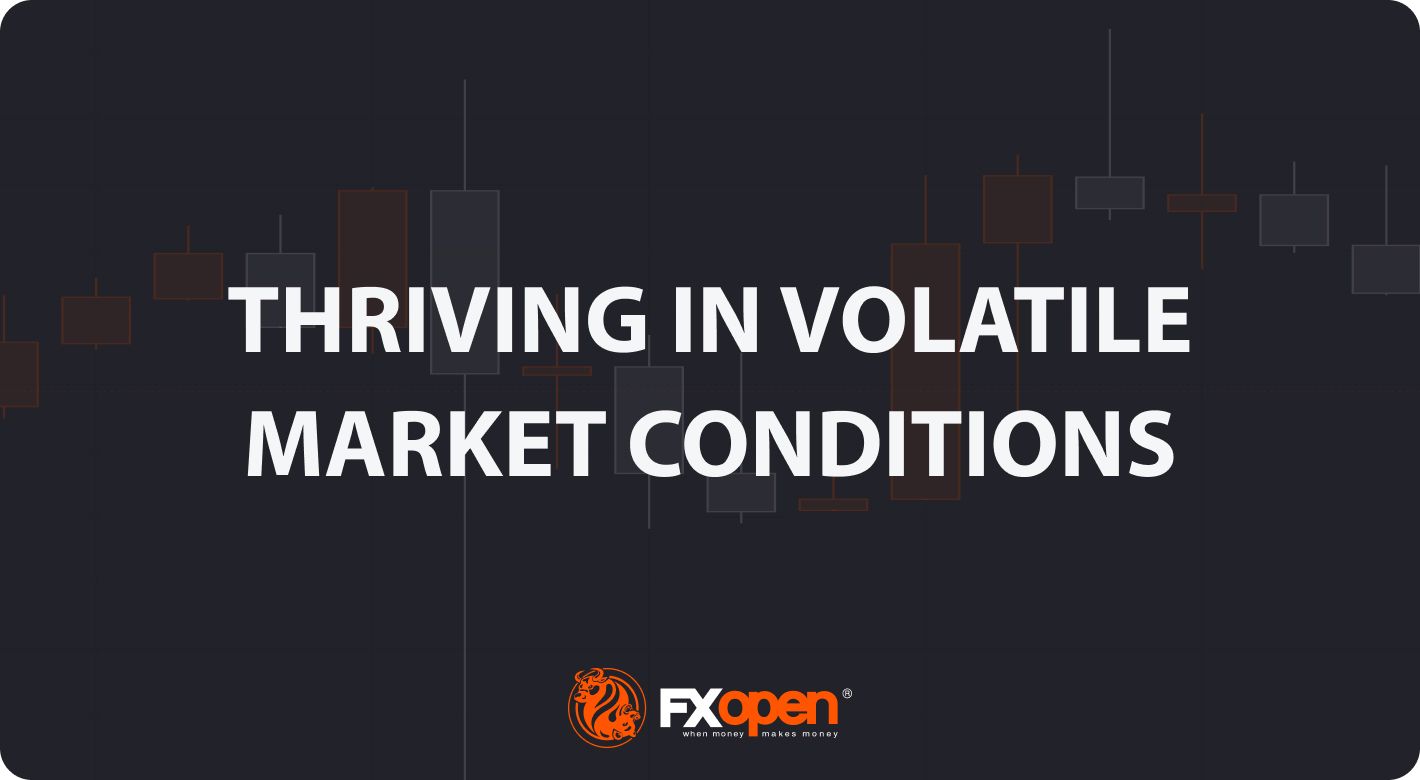FXOpen

Navigating financial markets often involves confronting periods of high volatility. For traders, the question invariably arises: what is the best way to deal with volatility? This article aims to provide a comprehensive overview of understanding market volatility, managing risks, choosing appropriate trading styles, and utilising key analytical tools to help traders survive and thrive in volatile conditions.
The Meaning of Market Volatility
Market volatility refers to the degree of variation in a financial instrument's price over a specific time frame. Simply put, it's the measure of how wildly or moderately the price of an asset, such as a stock, currency, or commodity, fluctuates.
Several factors contribute to market volatility. Macroeconomic indicators like inflation rates, unemployment data, and geopolitical events can send ripples through the market. Furthermore, company-specific news, such as earnings reports and mergers, can result in sharp price swings. Understanding volatility is essential for traders because it directly impacts the risk and reward profile of any trade.
Why Volatility Isn't Always Bad
Contrary to popular belief, market volatility isn't necessarily a negative phenomenon. While it does introduce an element of unpredictability, it also creates opportunities for traders to capitalise on price movements.
Volatility expands the trading range, allowing for potentially higher returns when executed correctly. The key is to manage market volatility, meaning aligning trading strategies to exploit these fluctuations rather than shy away from them. In more static markets, such opportunities are limited. Volatile markets can be highly lucrative, especially with the right approach to risk management.
Risk Management in Volatile Markets
In volatile market conditions, effective risk management becomes even more crucial. One indispensable tool is the stop-loss order. Unlike stable markets where narrower stop-losses can work, volatile markets often require wider stop-losses to avoid premature exits due to temporary price spikes.
Position sizing is another pivotal element. In a volatile market, the theory states it may be best to reduce the size of individual trades, usually risking between 1-2% of your account balance. Smaller positions equate to reduced risk, allowing traders to absorb unexpected market shifts without significantly damaging their accounts.
Diversification in the context of trading volatile markets often means spreading trades across multiple, uncorrelated markets. For instance, if you're trading equities, consider diversifying into commodities or currencies that are not strongly correlated with stock market performance. This strategy can provide a safety net, diminishing the impact of adverse moves in any single market.
Trading Styles for Volatile Markets
When it comes to thriving in these market conditions, selecting an appropriate trading style is paramount. Two styles that are often effective in volatile markets are swing trading and scalping. Swing trading involves holding positions for several days or weeks to capitalise on expected upward or downward market shifts. This style allows traders to take advantage of larger price swings and bypass the short-term noise often prevalent in volatile markets.
Scalping, on the other hand, is all about making quick profits from small price gaps that are usually created by order flows or spreads. In volatile markets, these opportunities arise more frequently, allowing scalpers to profit from quick moves.
Both styles have their own set of advantages and disadvantages, but they share the common trait of requiring strict risk management techniques to be effective. The choice between them largely depends on a trader's risk tolerance, time commitment, and skill level.
Tools for Analysing Volatility
In order to navigate volatile markets effectively, traders often turn to specific technical indicators designed to measure and interpret volatility. Two such popular tools are Bollinger Bands and the Average True Range (ATR), both of which you’ll find waiting for you in FXOpen’s free TickTrader platform.
Bollinger Bands consist of a middle band, which is a moving average, and two outer bands calculated based on price volatility. When the bands widen, it suggests increased volatility; conversely, narrowing bands indicate lower volatility.
The Average True Range, on the other hand, measures market volatility by calculating the average range between the high and low prices over a specific period. A rising ATR signifies increasing volatility, while a falling ATR indicates decreasing volatility.
You can find more volatility indicators here.
The Bottom Line
Successfully navigating volatile markets requires not just strategic planning and the right tools but also a strong psychological approach. Maintaining discipline and focus in the face of extreme price swings is essential. Mindfulness practices and a well-structured trading plan can help traders keep strong emotions in check.
For those ready to apply these principles in a live trading environment, consider opening an FXOpen account. Once you do, you’ll gain access to hundreds of markets, from stable to highly volatile. Good luck!
This article represents the opinion of the Companies operating under the FXOpen brand only. It is not to be construed as an offer, solicitation, or recommendation with respect to products and services provided by the Companies operating under the FXOpen brand, nor is it to be considered financial advice.
Stay ahead of the market!
Subscribe now to our mailing list and receive the latest market news and insights delivered directly to your inbox.








